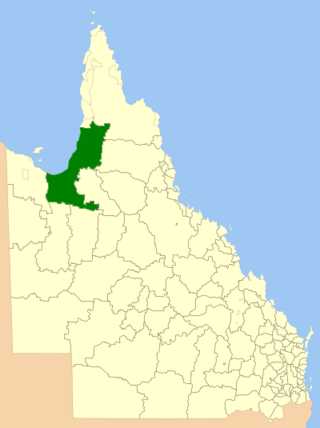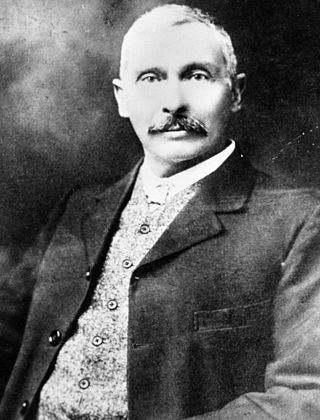
Edwin James Brady was an Australian journalist and poet.

Australian rules football in Queensland was the first official football code played in 1866. The Colony of Queensland was the second after Victoria to adopt Australian rules football, just days after the rules were widely published. For two decades it was the most popular football code, however a strong desire for representative football success saw Queenslanders favour British football variants for more than a century. As a result, Queensland is one of the two states to the east of the Australian cultural divide described as the Barassi Line. 120 years later in 1986 Queensland was the first state awarded a licence to have a club, the Brisbane Bears, in the national (AFL) competition, also its first privately owned club. However the Gold Coast based Bears had a detrimental effect until the 1993 redevelopment of the Brisbane Cricket Ground (Gabba). In contrast the Bears transformation into a Brisbane and traditional membership based club resulted in enormous growth, and a tripling of average AFL attendances by 1996.

The Shire of Cloncurry is a local government area in North West Queensland, Australia. It covers an area of 47,971 square kilometres (18,521.7 sq mi), and has existed as a local government entity since 1884. The major town and administrative centre of the shire is Cloncurry.

The Shire of Carpentaria is a local government area in Far North Queensland, Australia on the Gulf of Carpentaria, for which it is named.

The Shire of Burke is a local government area in North West Queensland, Australia. The shire lies on the south coast of the Gulf of Carpentaria and abuts the border with the Northern Territory. It covers an area of 39,864 square kilometres (15,391.6 sq mi), and has existed as a local government entity since 1885. The major town and administrative centre of the shire is Burketown.

HMVS Victoria was a 580-ton combined steam/sail sloop-of-war built in England in the 1850s for the colony of Victoria, Australia.
Alex Gibb was an Australian soccer player who played half-back with Queensland clubs and the Queensland and Australia national teams. Gibb is recognised as Australia's first international captain, and was awarded Socceroo cap number one retrospectively in 2000 by Football Federation Australia, for Australia's first Test match against New Zealand, played in 1922.

Hugh Chilman Buckler was a British actor. He was married to stage actress Violet Paget, about whom little has been found, save that she was somehow related to the Marquess of Anglesey. The film actor John Buckler was their son.
Sidney Harry Jeffryes was an early Australian wireless telegraphy operator. Trained by Australasian Wireless Co., Ltd., he was initially employed on coastal shipping and established at least one record for distance transmission. But he is best known for his service as the wireless officer at Cape Denison during the second year of the Australasian Antarctic Expedition under the command of explorer Douglas Mawson. His service ended in September 1913, two months prior to the relief of the shore party, when Jeffryes developed symptoms of paranoia and had to be relieved of his duties.

Elderslie Station, also known as Elderslie, is a pastoral lease that operates as a sheep and cattle station in Queensland, Australia.

The Queensland Country Women's Association (QCWA) is the Queensland chapter of the Country Women's Association in Australia. The association seeks to serve the interests of women and children in rural areas in Australia through a network of local branches. Established in 1922, local branches provide friendship and mutual support to their members while contributing to the betterment of life in their local communities. Over time, many branches have evolved to include support for wider issues such as domestic violence campaigns and fund-raising for international initiatives such as orphanages.

Thomas Harvey Johnston was an Australian biologist and parasitologist. He championed the efforts to eradicate the invasive prickly pear.

George Phillips was a surveyor, and member of the Queensland Legislative Assembly in Australia.
Brisbane Street is a street in Hobart, Tasmania. The street was named for Sir Thomas Makdougall Brisbane, the sixth Governor of New South Wales.
The Sun-Herald Tournament was a golf tournament held in Australia from 1924 to 1926. It was the first Australian tournament with significant prize money and was run along the lines of the British News of the World Match Play. The first event in 1924 was sponsored by The Sun newspaper in Sydney and was called the Sun Tournament. In 1925 and 1926 the events were co-sponsored by The Herald newspaper in Melbourne. The 1925 event was held in Melbourne and was called the Herald-Sun tournament while 1926 the event returned to Sydney and was called the Sun-Herald Tournament. The 1926 event was combined with the Australian Professional Championship.

Ellen Mary Kent Hughes, was an Australian medical doctor and council alderman. She was the first woman to serve on a local government council in Queensland, serving on the Kingaroy Shire Council from 1923 to 1924.
"Sleepy Seas" was a hit song which was first published 1920 by Private Reginald Stoneham while he managed the Melola Salon music store. It was an instant popular success with dance halls. The following year sales expanded to other music publishers. This vocal waltz was used to accompany silent movies, in the era before talkies.

William Harold Ryan was a police officer who served as the sixth Commissioner of the Queensland Police Force from January 1925 until his retirement in May 1934. Commencing as a constable in the organisation, he served 41 years as a police officer, nine years as the commissioner.
John Edward Burke was a shipowner in Queensland, Australia.













